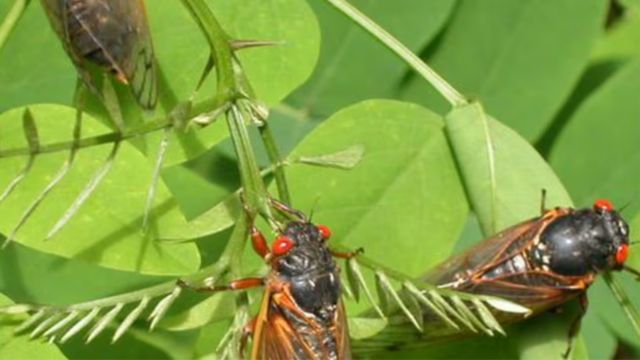As spring and summer beckon, Illinois is on the brink of a rare and fascinating natural event—the emergence of billions of periodical cicadas, unseen for 17 years, set to transform the landscape into a buzzing epicenter of ecological activity. This extraordinary occurrence, involving Brood XIII and Brood XIX, marks a convergence that hasn’t been witnessed in Illinois for 221 years, promising an unforgettable spectacle.
The Synchronized Symphony of Cicadas
Periodical cicadas, known for their synchronized life cycles and emergence, spend 17 years underground before surfacing en masse in a display of natural wonder. According to Allen Lawrance, associate curator of entomology at the Peggy Notebaert Nature Museum in Chicago, this year’s emergence is particularly noteworthy due to the simultaneous appearance of two distinct broods.
Brood XIX will take center stage in Northern Illinois, including Chicago, known for its particularly vocal cicadas, while Brood XIII will grace Southern Illinois, with certain areas preparing to welcome both broods.
The Sound of Summer
These cicadas, distinguishable from their annual counterparts by their size and color, are anticipated to create an auditory experience likened to a continuous chorus.
Historically, such events have led to remarkable phenomena, such as streets in Chicago being cleared of cicadas with snow shovels due to their sheer numbers. Their “singing,” a mix of mating calls and communication, promises to fill the air with an “endless hum,” turning the state into a vast, natural concert hall.
Life Underground
For 17 years, these cicadas have been quietly nurturing below the surface, siphoning nutrients from plant roots. Their emergence, a synchronized marvel of nature, leads to an all-encompassing presence across the state, especially around trees where cicada shells pile up after their feasting.
This emergence strategy ensures the survival of their species, overwhelming predators with their numbers and contributing significantly to the ecosystem.
An Unavoidable Presence
This year, the distribution of cicadas across Illinois will be varied, with some neighborhoods buzzing with activity while others observe from a quieter distance. The rule of thumb, as shared by Lawrance, is that if cicadas were present during the last emergence, they are likely to return to the same areas, continuing their 17-year cycle.
Embracing the Cicada Emergence
While the prospect of billions of cicadas might seem daunting, their role in the ecosystem is invaluable. As they return nutrients to the soil through their life and death, they offer a “big boost” to plant growth and provide a feast for local wildlife. For garden enthusiasts, cicadas can even serve as a natural fertilizer, enriching soil with essential nutrients.
An Experience to Savor
Despite the inevitability of their presence, the cicada emergence offers a unique opportunity to engage with the natural world. The EPA advises against the use of pesticides, emphasizing the cicadas’ harmlessness and the potential adverse effects on other organisms.
Instead, Illinois residents and visitors are encouraged to experience the phenomenon as a remarkable natural concert, an opportunity to appreciate the intricate symphony of life that unfolds every 17 years.
As Illinois prepares for this unprecedented event, the great cicada emergence of 2024 stands as a testament to the marvels of nature, inviting us to listen, observe, and appreciate the fleeting, yet impactful, presence of these remarkable insects.

